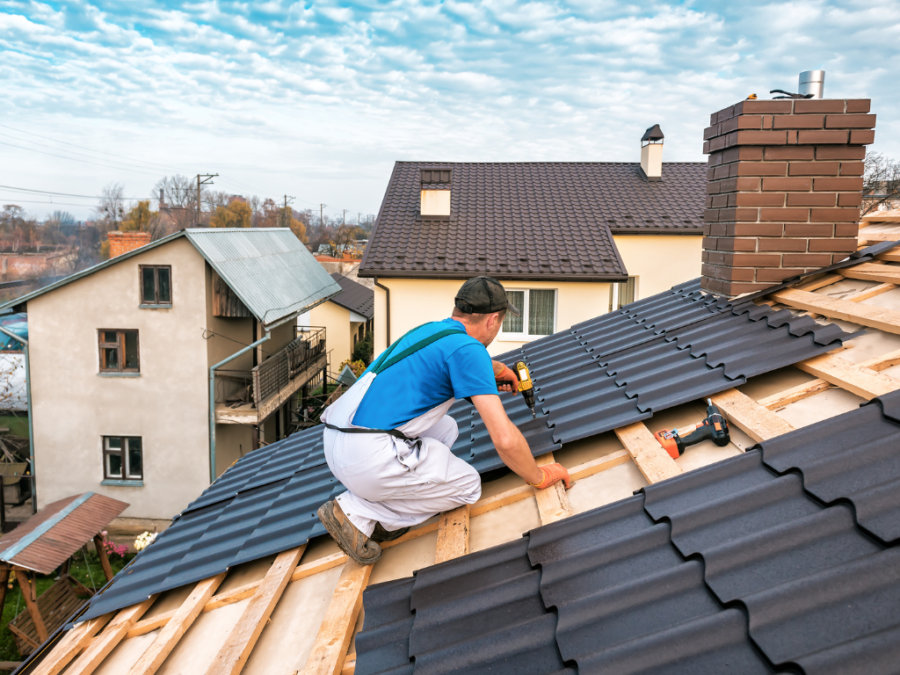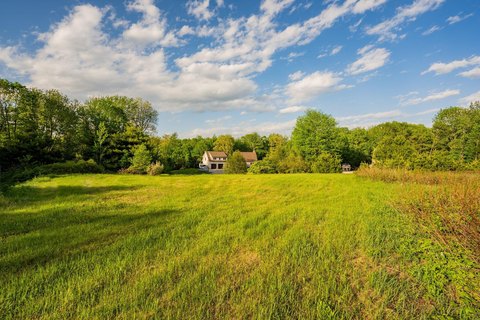It was a quiet Saturday afternoon when Sarah first heard the unmistakable sound of dripping water. What started as a small trickle soon became a steady stream seeping through the ceiling of her living room. Panic set in. She rushed outside only to find that last night’s storm had blown off a section of her roof. In an instant, her peaceful weekend turned into a frantic search for an emergency roof repair service. As the rain continued to pour, Sarah realized that time was of the essence—delaying repairs could mean water damage, mold growth, and escalating costs. Sarah’s story isn’t unique. Thousands of homeowners face similar situations every year, requiring immediate action to prevent further damage. Emergency roof repair is often a race against time, requiring swift decisions, expert intervention, and, usually, unplanned expenses.
This article will explore the critical aspects of emergency roof repair, including why it’s needed, the types of damages that require immediate attention, the costs involved, and strategies for minimizing long-term damage. We will also examine statistics on the prevalence of emergency roof repairs and what homeowners can do to be better prepared for roofing emergencies.
- Understanding the Need for Emergency Roof Repairs
Roofing emergencies often arise without warning, usually following severe weather conditions such as heavy rain, strong winds, hailstorms, or falling trees. According to the National Weather Service, more than 1,000 tornadoes strike the United States each year, and many of these storms lead to roof damage that requires immediate attention. High winds and debris can rip shingles from roofs, exposing the underlying structures to rain and water infiltration.
Water infiltration is one of the most common issues requiring emergency roof repair. Once a roof is compromised, even small gaps can allow significant water to enter the home. This can lead to a host of problems, including:
- Water damage to ceilings, walls, and flooring.
- The Centers for Disease Control and Prevention (CDC) warns that mold growth can occur within 24 to 48 hours of water exposure.
- Structural damage to wooden beams and insulation can compromise the house’s integrity.
In cold climates, the risk of ice dams—a buildup of ice on the roof edge—can also result in emergency repair needs. According to a study by Harvard University’s Joint Center for Housing Studies, winter-related roofing issues such as ice dams are common in homes with severely cold regions, as the freeze-thaw cycles create dangerous conditions for roofs that are not properly insulated or ventilated.
- Types of Roof Damage Requiring Immediate Attention
While not all roof damage requires an emergency response, certain types of damage demand immediate action to prevent more extensive and costly repairs later. Here are some of the most common situations where emergency roof repair is necessary:
a. Missing or Damaged Shingles
The most visible sign of roof damage is missing or damaged shingles. Strong winds can lift shingles off the roof, leaving exposed areas susceptible to water infiltration. In severe cases, entire sections of shingles can be blown away, exposing the underlayment and roof decking. The underlying materials can become soaked if left untreated, leading to structural rot and mold growth.
b. Leaks and Water Intrusion
One of the most evident signs that you need an emergency roof repair is the presence of a leak inside your home. Even minor leaks can quickly escalate into significant water damage. The Insurance Information Institute (III) reports that water damage and freezing issues are the second most common cause of home insurance claims in the U.S., accounting for nearly 20% of all claims. Addressing leaks immediately can prevent much more significant problems, including compromised electrical systems or the need for drywall replacement.
c. Storm Damage
Severe weather events such as hurricanes, tornadoes, and thunderstorms can cause extensive roof damage. Flying debris, tree limbs, and hail can puncture roofing materials, creating openings for water to enter. Hailstones, in particular, can cause immediate and long-term damage if they crack shingles or make dents in metal roofing.
d. Fallen Trees or Large Debris
If a tree or large branch falls on your roof, you face a severe roofing emergency. The sheer weight of a tree can cause structural damage, crush the roof’s surface, and even collapse parts of your home’s upper structure. In such cases, immediate attention is required to fix the roof and ensure the home remains structurally sound.
- The Costs of Emergency Roof Repair
Due to their urgency and need for immediate intervention, emergency roof repairs are typically more expensive than scheduled maintenance or routine repairs. A survey conducted by HomeAdvisor found that the average cost of emergency roof repairs ranges from $400 to $1,500, depending on the severity of the damage and the type of roof material.
Factors Influencing the Cost:
- Type of roofing material: Asphalt shingles are relatively inexpensive to replace, but slate, tile, or metal roofs can significantly increase costs. Due to the material’s complexity, repairing or replacing metal roofing can cost $1,200 to $3,000.
- The extent of damage: Small leaks or isolated shingle replacements will be on the lower end of the cost spectrum, while widespread damage requiring extensive repairs will push costs higher.
- Timing and labor: Emergency repairs often require contractors to work after hours or during adverse weather conditions, leading to additional labor costs. Homeowners should also be aware that during peak storm seasons, such as hurricane season in the southeast U.S., demand for roofing contractors skyrockets, and emergency rates can spike accordingly.
While emergency repairs can be costly, they are often necessary to prevent much larger and more expensive problems. Roofing Contractor Magazine estimates that immediately addressing a small roof leak can cost between $150 and $500. Still, if left unchecked, it could lead to a roof replacement costing anywhere from $5,000 to $10,000.
- How to Minimize Damage Before Emergency Help Arrives
In the critical moments before a professional roofing team can arrive, there are steps homeowners can take to minimize damage and protect their property:
a. Temporary Solutions
For small leaks, homeowners can apply tarps or plastic sheeting to cover the affected area and prevent further water infiltration. Roofing tarps are available at most home improvement stores and can be fastened using roofing nails or heavy-duty adhesive. While these solutions are temporary, they can buy time until professionals arrive. According to FEMA, proper tarp installation can prevent an additional 50% of water damage from occurring in the short term.
b. Water Mitigation
If water has already started to seep into your home, placing buckets or containers under leaks can prevent damage to flooring or furniture. Drying out wet areas with towels or fans can also slow mold growth. In cases of severe water intrusion, turning off the electricity in affected areas is recommended to avoid electrical hazards.
c. Documenting the Damage
Before emergency repairs begin, it’s essential to document the damage with photos and videos for insurance purposes. According to State Farm, providing a detailed account of the damage will streamline the claims process, allowing you to get reimbursement for repairs more quickly.
- Preparing for Future Roofing Emergencies
While it’s impossible to prevent every roofing emergency, there are steps homeowners can take to reduce the risk and be better prepared:
a. Regular Roof Maintenance
The National Roofing Contractors Association (NRCA) recommends that homeowners schedule roof inspections at least twice a year—once in the spring and once in the fall. Routine inspections can help identify potential weak spots before they become emergencies, such as loose shingles or worn flashing. Additionally, ensuring that gutters are clear of debris will help prevent water buildup that can lead to leaks.
b. Storm-Proofing Your Roof
For homeowners in areas prone to severe weather, installing impact-resistant shingles or reinforcing roof decking can provide additional protection. According to a study by The Insurance Institute for Business & Home Safety (IBHS), homes with impact-resistant roofs are 40% less likely to suffer significant damage during hailstorms. Investing in a storm-resistant roof can reduce the likelihood of an emergency and lower home insurance premiums.
c. Emergency Contact List
Having a list of trusted local roofing contractors on hand can save valuable time during an emergency. Many roofing companies offer 24/7 emergency services, and developing a relationship with a contractor beforehand ensures you won’t be scrambling to find help when a crisis occurs.
Conclusion: Fast Action, Long-Term Solutions
Emergency roof repair is unfortunate for many homeowners, especially in regions prone to severe weather. While immediate action can be stressful and costly, addressing roof damage quickly is essential to prevent further complications, such as water damage, mold growth, and structural instability. By understanding the types of damage that require emergency attention, taking steps to mitigate damage, and preparing for future events, homeowners can protect their investments and ensure the safety of their families. Ultimately, while the costs of emergency roof repair may seem high in the short term, they pale compared to the long-term expenses of ignoring the problem.















